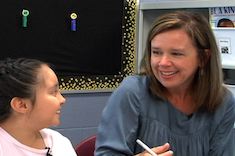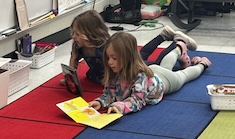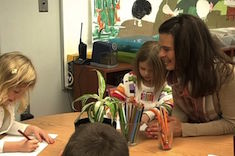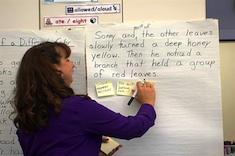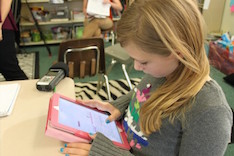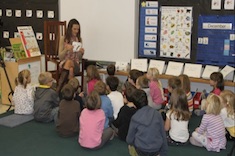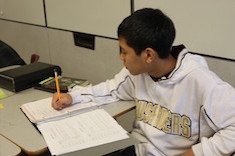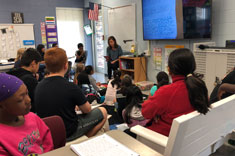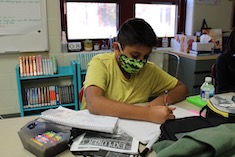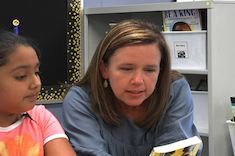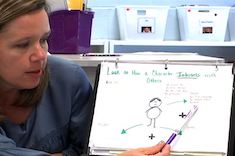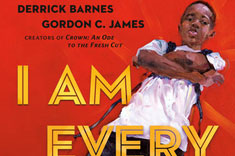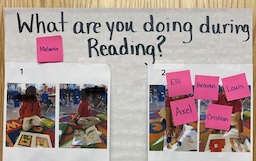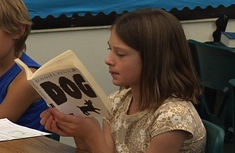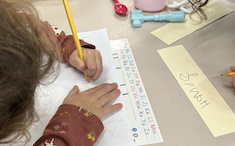3rd
Latest Content
Eight Tips to Make Virtual Learning Equitable and Accessible for All Students
Lisa Mazinas reminds us of ways to make virtual learning equitable and accessible.
Responding to Appeals for Help
Dana Murphy outlines three options to respond to a student who is stuck when reading and looking to the teacher for the answer. By being mindful when students appeal for help, we can make intentional, on-the-spot decisions to empower students to become better readers.
An Invitation to Elevate Readers’ Thinking Through Conversation
Melissa Quimby offers structures to help elevate readers’ thinking through book club conversations. You’ll love putting these practical ideas into play in your own classroom—and be awed by the depth of your readers’ understandings.
Teaching Students to Self-Monitor
Dana Murphy explicitly teaches students how to self-monitor through modeling and using an anchor chart that clearly defines each step.
Fostering a Love of Reading in All Students
Lisa Mazinas reminds us of the importance of fostering a love of reading in all students. She offers specific ways to reconnect students with the enjoyment of reading.
Let’s Do It Again, Together
Heather Fisher revisits a whole-school vocabulary routine that she set in motion. In this update, she shares the ways she adjusted to work together as a team rather than fly solo. This might be just the school-wide vocabulary routine you’ve been craving.
Informational Poetry
Hannah Tills and Josie Stewart teach students to write informational poetry. They remind us that poetry can serve as a mentor text in many units and does not have to be siloed in its own unit.
Writing About Reading
Mandy Robek is on a quest to make writing about reading feel natural with her elementary students. She shares practical ways to help students change the way they approach writing about reading to lift the level of comprehension and conversation.
Step Into Poetry: Building a Poetry-Conscious Classroom
Joanne Emery has curated a fabulous list of resources and ideas to build a poetry-conscious classroom community.
Reclaiming Our Time
Vivian Chen gives four steps to adjusting a lesson from the teacher’s guide to reclaim your time and make the lesson more meaningful and engaging to students.
Increasing Engagement During Online Practice Opportunities
Mallory Messenger is intentional about monitoring and supporting cognitive engagement while students use online practice tools. Use her tips so your students are engaged too!
Bet You Didn’t Know: Chicken Eggs and Research
Mandy Robek encourages young writers to collect information about a topic. She provides whole-class and individual structures for students to learn that their understanding can change, as well as to be able to access information when they are ready to draft. Don’t miss Mrs. Robek’s digital class book.
Poetry Friday Stretches Into Poetry Slam
Mandy Robek shares an update to her Poetry Friday routine inspired by the professional book Artfully Teaching the Science of Reading by Chase Young, David Page, and Timothy V. Rasinski. You, too, will want to incorporate this poetry routine into your week.
Plagued by Plagiarism
Plagiarism is an age-old issue, but with the emergence of AI tools, it’s plaguing our classrooms again. Vivian Chen offers three practical (and essential) approaches when working with writers.
Fostering Math Identities with Picture Books
Mandy Robek uses picture books to help her students build their identities as mathematicians. Mandy shares the process and a booklist.
Developing and Listening to Your Inner Voice During Minilessons
Katie Linder reminds us of the importance of listening to (or ignoring) our own inner voices when delivering whole-group instruction. Katie guides us in using our inner voices to make in-the-moment decisions that sharpen lessons.
The Art of Noticing: Have Your Students Played with Language Today?
Stella Villalba noticed her students were so busy writing quickly, they were not paying attention to crafting language. A student, Gabriela, turns to a book and asks for help to make her writing sound like the book. Stella uses this moment to slow down the class and create space to be inspired to write in beautiful ways.
Leveraging AI in Elementary Literacy
David Pittman offers practical and time-saving tips for using AI to help make instructional plans. Need a rubric or discussion questions? David shows how using AI offers a springboard for creating tools for elementary literacy instruction.
My Teaching Toolbox (Part 2)
Dana Murphy reminds us that having a teaching toolbox makes planning efficient and effective. In this second installment of a two-part series, Dana offers two additional approaches to delivering strong reading instruction.
Small Shifts That Make a Big Difference
Dana Murphy names two practices that made a big difference in her work as a reading specialist. You may be surprised at the simplicity and smallness that led to powerful gains in her readers.
My Teaching Toolbox (Part 1)
Every now and then we make the classic teaching mistake: assign rather than teach. Dana Murphy curated her favorite teaching tools that help her stay inspired to continually teach students. This is part one of a two-part series.
Holding Space for Counter-Narratives That Honor Communities
Stella Villalba guides us to expand the counter-narrative texts we use in our classrooms. Counter-narrative texts challenge the stereotypes often seen about a group of people, and they celebrate the joy and resilience of a community. Stella provides a list of critical questions that allow us to deeply explore texts, as well as suggestions of books to read.
Let’s Write Together: The Importance of Class Books
Jen Court considers whether creating class books is a valuable use of time for today’s young students. As she teases out this question, she realizes class books are a relevant and essential instructional strategy.
Creating Learning Progressions with Students
Tara Barnett and Kate Mills outline the steps to involve students in defining how to progress as readers and then set goals. They offer a practical plan for empowering students to take ownership of their learning.
Getting Ready to Read
Dana Murphy encourages us to go beyond teaching students to recognize different genres by helping them establish expectations of genres so they’ll be ready to read.
Managing Your Students’ Independent Work During Guided Reading
Are you ready to ditch small-group instruction because it seems too difficult for students to work independently? Lisa Mazinas compiled a helpful chart to problem solve common classroom issues and support student independence.
Developing Independent Writers
Vivian Chen tackles the difficult topic of helping students become independent as writers. She offers tips for before, during, and after writing time to uplift student agency.
Encouraging Agency
Melanie Meehan shares three tips on helping students be independent and productive writers. She also includes a hefty list of craft moves from mentor texts to use while teaching writers.
Learning from Our Favorite Illustrators
Ruth Metcalfe tapped a plethora of resources to help her first-grade writers understand how to communicate meaning with illustrations.
Writing Graphic Novels
Melanie Meehan shares the immersion process of writing graphic novels with middle grade students. You won’t want to miss the incredible student writing that shows the power of offering choice to young writers.
Browse Content By
Type
Category
- Assessment Tools
- Big Fresh Archives
- Booklists
- Choice Numeracy
- Classroom Design
- Common Core
- Community Building
- Conferring
- Content Literacy
- Digital Literacy
- English Language Learners
- Equity
- Family Relations
- Free Samples
- Guiding Groups
- Leadership
- Literacy Coaches
- Mentor Texts
- Minilessons
- New Teacher Mentors
- Podcasts
- Poetry
- Quote Collections
- Reading Strategies
- Self Care
- Struggling and Striving Learners
- Talking and Listening
- Teacher Study Groups
- Teaching Reading
- Teaching Writing
- Word Study and Vocabulary
Author
- Melissa Quimby
- Nawal Qarooni
- Gwen Blumberg
- Julie Cox
- The Lead Learners
- Hannah Tills
- Josie Stewart
- Ruth Metcalfe
- Mallory Messenger
- Becca Burk
- Jodie Bailey
- Vivian Chen
- Mary Brower
- Tiffany Abbott Fuller
- Stephanie Affinito
- Ruth Ayres
- Leigh Anne Eck
- Heather Fisher
- Shari Frost
- Julie Johnson
- Suzy Kaback
- Gigi McAllister
- Shirl McPhillips
- Melanie Meehan
- Cathy Mere
- Debbie Miller
- Tara Barnett and Kate Mills
- Tammy Mulligan
- Dana Murphy
- Bitsy Parks
- David Pittman
- Brenda Power
- Heather Rader
- Matt Renwick
- Mandy Robek
- Christy Rush-Levine
- Gretchen Schroeder
- Jen Schwanke
- Brian Sepe
- Katherine Sokolowski
- Stella Villalba
- Jennifer Vincent
Grade Level
Choice Literacy Membership
Articles
Get full access to all Choice Literacy article content
Videos
Get full access to all Choice Literacy video content
Courses
Access Choice Literacy course curriculum and training


